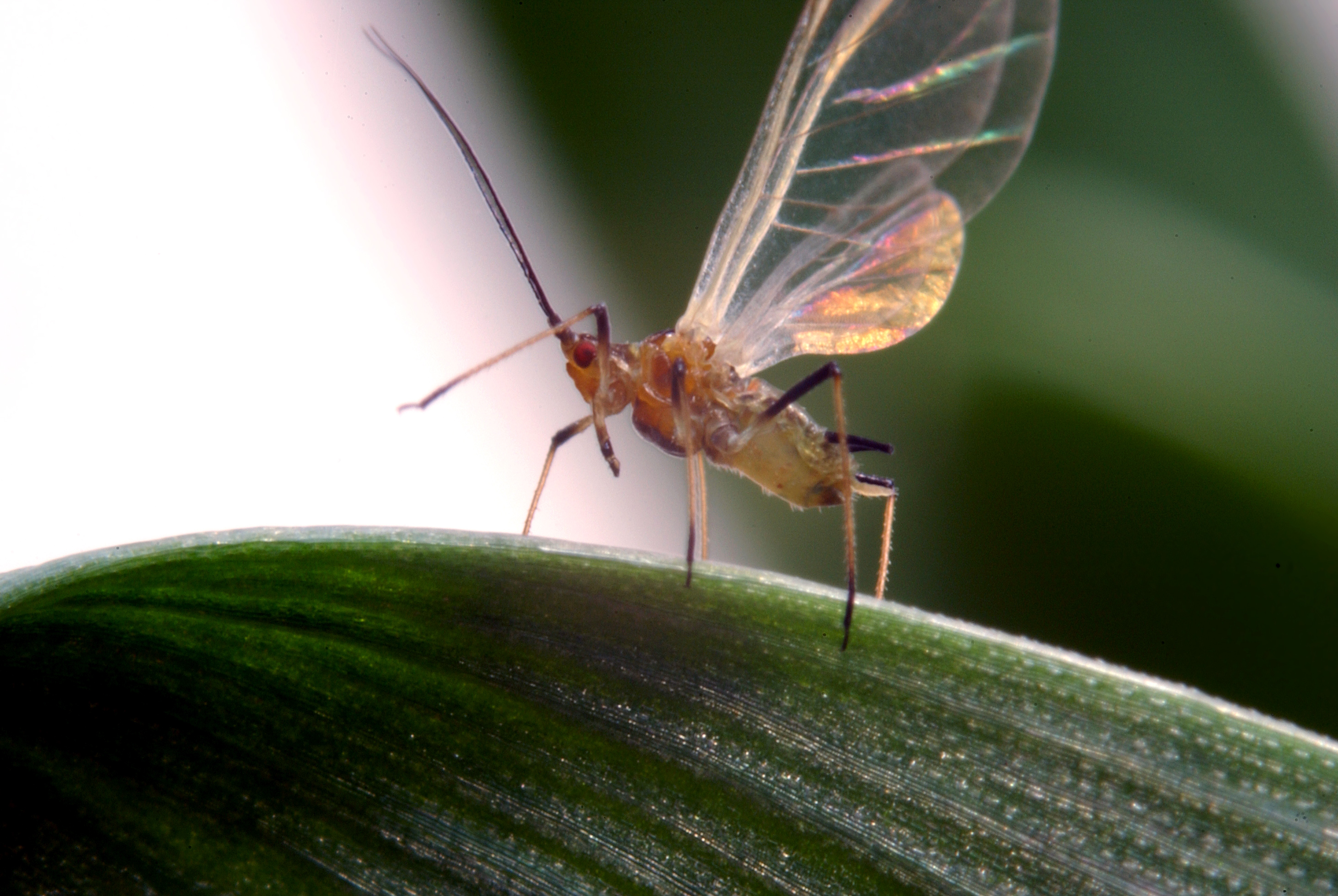The big picture: using wildflower strips for pest control
The first in-depth analysis into the seasonal timing of certain bird and insect behaviours has confirmed that spring is indeed getting earlier each year – but that exactly how much earlier these events now start depends on where in the UK and in which habitat they occur.
The authors of the report have warned these trends could have serious ramifications for ecosystems, as significant variation between groups of animals in the rates of advance means populations are becoming “out of sync” with the life cycles of their prey.
The fifty-year study into natural cycles of egg laying and migration has also dashed environmentalists’ hopes that shaded habitats such as forests are shielding some populations from the destabilising effects of global warming.
Lead author Dr James Bell, who heads up the Rothamsted Insect Survey, said: “There was already good evidence that spring is coming earlier each year, but what we didn’t expect to find was that it was advancing as much in forests as it is in open areas such as grassland.
“Equally, in areas where we’d expect to see much greater acceleration, such as urban parkland, the rates of advance appear to be the same.
“This all points to a complex picture emerging under climate change, which makes ecosystem responses hard to predict, and even harder for conservationists to prepare for.”
An earlier study by the group looking at a 30-year period had shown the average rate of advance varied from about a week earlier for birds and a month earlier for aphids, but this new paper reveals an even more complex picture.

Dr Stephen Thackeray of the Centre for Ecology & Hydrology, leader of the NERC-funded project, said “Our previous research has shown that, in the UK, many signs of spring have been shifting earlier over the last few decades and that this is likely to be driven by climatic change.
“However, we have never before had such a detailed picture of how these changes vary across the UK and its major habitats.”
Published in the journal Global Change Biology, the study charts the seasonal habits of more than 250 UK species of birds and insects, and shows clear evidence that aphids, moths and butterflies are now on the wing, and birds are laying their eggs, much earlier than they were in the mid twentieth century.
The researchers, which also included scientists from the Centre for Ecology & Hydrology (CEH), the British Trust for Ornithology (BTO), Butterfly Conservation, and Science and Advice for Scottish Agriculture (SASA), analysed data collected between 1960 and 2010 from three national monitoring networks – the Rothamsted Insect Survey, the UK Butterfly Monitoring Scheme, and the Nest Record Scheme
The long-term changes they uncovered broadly confirm similar effects being observed the world over – that as global temperatures rise, natural phenomena such as flowering, or emergence from hibernation, are occurring earlier each year.
But by looking in detail at this long-term data, the team have revealed the responses of some species to climate change are not straightforward, nor necessarily predictable.
Moths provide a good example of this; as those species that turn from caterpillars to adults earlier in the year are apparently much more sensitive to global warming than those emerging later in the summer.
Those moths that start flying before June have started doing so much earlier in the year.
Prof Tom Brereton of Butterfly Conservation said it was unclear what was behind these specific patterns, nor why butterflies didn’t show something similar.
“Whatever the reasons, we should be concerned about how dramatically climate change is affecting butterfly and moth life cycles.”
And bucking this trend towards earlier onset are those birds and butterflies that inhabit farmland, as well as birds who live in coastal habitats – providing possible evidence that other factors, such as declining food availability, are applying a different pressure on these populations and delaying the onset of breeding.
Dr James Pearce-Higgins, Director of Science at the BTO, said: “Birds are at the top of many food chains, and are sensitive to the impacts of climate change on the availability of their insect prey. This work shows how changing spring conditions may affect the ability of birds to find food, and that those impacts are likely to vary across the country.”
A particularly worrying finding of the study is that the rate at which these seasonal behaviours are shifting is the same in open habitats, such as grasslands, as it is in shady ones, such as forests. It had been thought forests might offer some protection for species against rising temperatures.
“The work is important because it shows us that we cannot rely on habitat to slow down climate change impacts, even in woodlands and forests where the conditions are more stable, and which were expected to buffer against adverse changes,” says Dr Bell.
As well as providing more evidence of the effects of climate change, the study also provides the most detailed assessment yet of how many species’ life cycles are determined by geography and altitude.
It shows that rather than tracking the simple north-south trend of increasing temperatures and earlier onset of spring, the date of key behaviours of many species follow more complex patterns.
So, whilst aphid activity simply becomes progressively later the further north you go, the same was only true for birds and butterflies up to the likes of Londonderry/Derry, Gretna or Newcastle.
Beyond that point, butterflies become active earlier in the warmer, wetter west than the colder, drier east, whilst for birds laying eggs, the opposite is true.
Dr Jon Pickup, lead aphid researcher at SASA said: “As pests, it remains a concern that aphid migrations are getting earlier at a dramatic rate, and this piece of work shows us that signal across the UK very clearly”.
The study is the result of many years work analysing and interpreting huge data sets, and now lays the ground work for some urgent new research into what is driving these impacts at habitat levels.
“There is unlikely to be a more comprehensive analysis that address both spatial and habitat variations in seasonal timings,” says Dr Bell.

Project Leader - The Insect Survey

Entomologist
Rothamsted Research is the longest-running agricultural research institute in the world. We work from gene to field with a proud history of ground-breaking
discoveries in areas as diverse as crop management, statistical interpretation and soil health. Our founders, in 1843, were the pioneers of modern
agriculture, and we are known for our imaginative science and our collaborative approach to developing innovative farm practice.
Through independent research, we make significant contributions to improving agri-food systems in the UK and internationally, with
economic impact estimated to exceed £3 bn in annual contribution to the UK economy. Our strength lies in our systems approach, which combines strategic research,
interdisciplinary teams and multiple partnerships.
Rothamsted is home to three unique National Bioscience Research Infrastructures which are open to researchers from all over the world:
The Long-Term Experiments,
Rothamsted Insect Survey and the
North Wyke Farm Platform.
We are strategically funded by the Biotechnology and Biological Sciences Research Council (BBSRC), with additional support from other national and
international funding streams, and from industry. We are also supported by the Lawes Agricultural Trust (LAT).
The Biotechnology and Biological Sciences Research Council is part of UK Research and Innovation, a non-departmental public body funded by a grant-in-aid
from the UK government.
BBSRC invests to push back the frontiers of biology and deliver a healthy, prosperous and sustainable future. Through our investments, we build and support a vibrant,
dynamic and inclusive community which delivers ground-breaking discoveries and develops bio-based solutions that contribute to tackling global challenges,
such as sustainable food production, climate change, and healthy ageing.
As part of UK Research and Innovation (UKRI), we not only play a pivotal role in fostering connections that enable the UK’s world-class research and innovation system
to flourish – we also have a responsibility to enable the creation of a research culture that is diverse, resilient, and engaged.
BBSRC proudly forges interdisciplinary collaborations where excellent bioscience has a fundamental role. We pioneer approaches that enhance the equality, diversity,
and inclusion of talent by investing in people, infrastructure, technologies, and partnerships on a global scale.
The Lawes Agricultural Trust, established in 1889 by Sir John Bennet Lawes, supports Rothamsted Research’s national and international agricultural science through the provision of land, facilities and funding. LAT, a charitable trust, owns the estates at Harpenden and Broom's Barn, including many of the buildings used by Rothamsted Research. LAT provides an annual research grant to the Director, accommodation for nearly 200 people, and support for fellowships for young scientists from developing countries. LAT also makes capital grants to help modernise facilities at Rothamsted, or invests in new buildings.